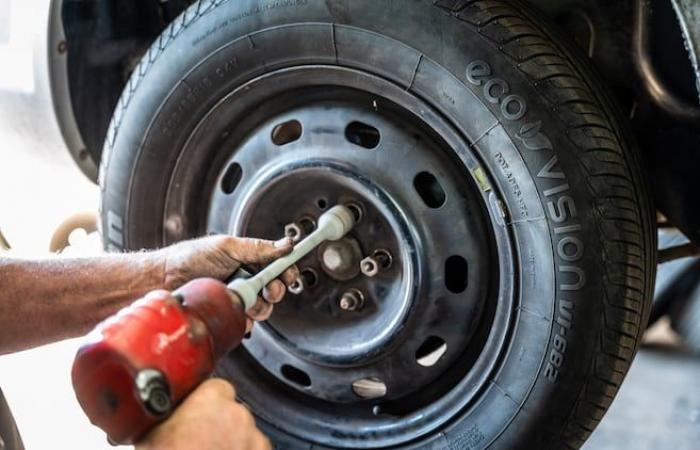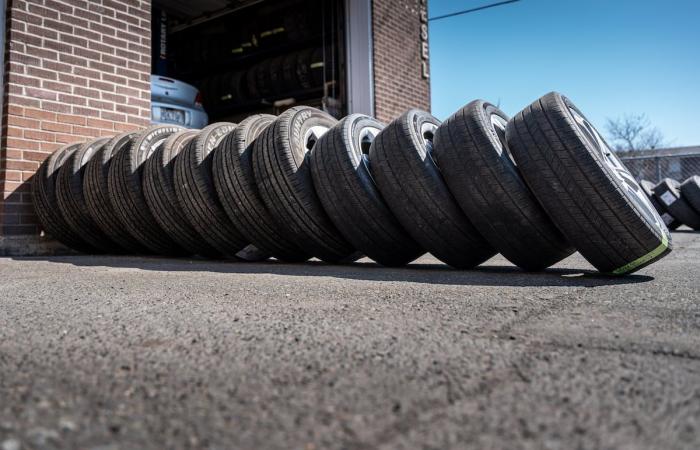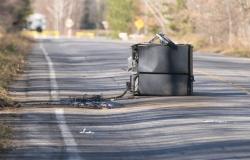The song repeats itself, but struggles to become an earworm. Scheduling your tire change sooner rather than later is not a common practice among motorists.
“My dream is that consumers make their appointment a season in advance like you do at the dentist or doctor,” says Charlyne Ratté, vice-president of Pneus Ratté.
Charlyne Ratté, vice-president of Pneus Ratté (Erick Labbé/Archives Le Soleil)
Such a change in habits would make it possible to better plan seasonal labor needs in its 13 drop-off points, she puts forward.
“Labor is one of the major expenses of a business. If we hire staff too far in advance without the consumer being there, it becomes a big challenge,” explains the woman who would like to have more predictability.
“When it’s 30 degrees in September and the terraces are still open, the last thing on our minds is our oil change and tire installation.”
— Charlyne Ratté, vice-president of Pneus Ratté
Indeed, the collective “awakening” occurs as soon as motorists clean the garage and the shed, where the four tires hide for the summer, she observes.
“When the alarm arrives, people have already started to make their appointments. The available dates are further away,” says the woman who has never had to refuse a client’s request.
For his part, CAA-Quebec spokesperson Simon Bourassa came to the same conclusion after an exchange with the director of the network of garages recommended by the organization.
“There is a certain delay compared to other seasons where it booked more quickly,” he says.
“Everyone benefits from booking earlier. The consumer ensures that he has a place and does not get caught with the fateful date of December 1st,” he adds.
Premature wear?
Does the myth that heat will prematurely wear out tire rubber partly explain late bookings?
“Definitely,” says the businesswoman, who has worked in the field for 30 years.
“People still think they will burn or wear out their tires faster if they install them a week or two before October,” she adds.
As soon as the mercury hovers around 7°C for several consecutive days, there is no need to worry.
Mechanical workshops are still waiting for the peak period to begin. (Jimmy Plante/La Voix de l’Est Archives)
“A person would really have to drive several hundred kilometers at temperatures exceeding 15 degrees for there to be premature wear of the tires,” says the CAA-Quebec spokesperson.
Incentives
Saving money in addition to having free rein over the range of tires on the market are two incentives that should catch on with consumers, says Charlyne Ratté.
Even if the increase in tire prices returns to normal this year – a jump of 3 to 5% compared to 15% in the aftermath of the pandemic – the interest in being able to save a few dollars does not wane.
“There are always clearance products from the year before that may be interesting to obtain.”
— Charlyne Ratté, vice-president of Pneus Ratté
Some manufacturers also offer free installation with the purchase of a targeted product from the beginning of September. However, this type of promotion tends to expire in mid-October.
“It’s with the aim of encouraging a little more hasty installation to relieve workshop congestion,” she says, while admitting that these offers apply most of the time to more expensive products.
However, we must be vigilant with regard to tires from little-known brands which sometimes display a price cut by 30% compared to the offer from the major manufacturers.
“What will attract the consumer is the price. Some [manufacturiers] do not have the technology or the expertise to design a product that will be safe, but above all one that responds to the winter conditions we have in Quebec. […] It will have an influence on the durability and performance of the tire,” says Simon Bourassa, who encourages motorists to follow the advice of specialists in case of doubt.
FIVE TIPS FOR YOUR PURCHASE
Ask for recommendations. “There are so many products on the market and all tires are good for different reasons. […] We have to make sure we have the tire that suits us for our needs and our use of the car,” explains the vice-president of Pneus Ratté.
Favor brands from large, well-known manufacturers. Be wary of brands that are a little more obscure.
Avoid used tires. Storage conditions, time of purchase and early deterioration of rubber: several question marks remain when the time comes to give a second life to winter tires.
Think twice before opting for all-season tires. “It’s not a good tire in winter nor a good tire in summer. People think they are saving money by not buying winter tires while keeping their all-season tires. But wear and tear will come more quickly,” suggests the CAA-Quebec spokesperson.
Expect a hefty bill for tires approved for electric cars. They cost almost twice as much, but are still necessary for safety. “Manufacturers must take into consideration the weight of the electric vehicle which is very heavy. […] You need a tire that is more rigid in its construction, but which must also provide comfort and a smooth ride,” says Ms. Ratté.
You have questions or suggestions for the Consumption section of Soleil? Write to us now at [email protected].







